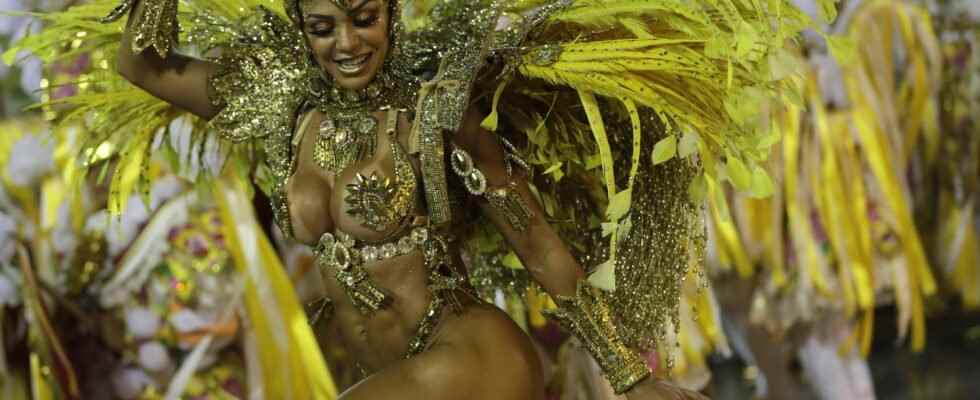Considered one of the biggest celebrations in the world, the Rio carnival combines dance and music. Faced with the progression of the Omicron variant in Brazil, the famous samba school parades are postponed to April 2022.
[Mis à jour le 25 janvier 2022 à 16h11] One of the world’s famous popular festivals, the Rio Carnival is held every winter from late February to early March. Renowned for its good atmosphere and impressive shows, this colorful event attracts tens of thousands of people from all over the world to vibrate to the sound of the batucadas, brass bands composed mainly of wind instruments and drums. Following the progress of the Omicron variant in Brazil, authorities have indicated that the carnival parades in Rio de Janeiro and Sao Paulo scheduled for the end of February are postponed to April 2022. “The town halls of Rio de Janeiro and Sao Paulo decided to postpone the parades of the samba schools” for the end of April, “due to the current situation of the pandemic in Brazil and the need to preserve lives”.
In Rio de Janeiro, the carnival is an extremely important festive symbol, as in most major cities in the Brazil. It takes place every year during the 5 days preceding the Ash Wednesday. The carnival thus begins each year on a Friday and ends the following Tuesday. However, the progress of the Omicron variant in Brazil forced the organizers to postpone the event for several months. The 2022 edition of the Rio Carnival will therefore begin on April 21, 2022.
The Rio de Janeiro Carnival 2022 will take place in several must-see places in the “cidade maravilhosa”, the marvelous city.
>>> At the Marques de Sapucai Sambadrome. You must have already seen on television images of the “official competition” between samba schools, which is held in this open-air samba stadium, which can accommodate 90,000 spectators. Admission is charged and it is difficult to obtain tickets given the enthusiasm of the people of Rio for the event (to try to obtain tickets, contact Riotur, the tourist organization that manages the carnival). Each day a different parade is held here, usually between 9 p.m. and 4 a.m. The performances give rise to a rating by the judges and the scores obtained determine the positioning of the schools in the final ranking at the end of the carnival. The process is similar for each school: an interpreter begins to launch the samba, hundreds of drummers then punctuate the procession of the floats, the baianas (dancers) vibrate in their superb costumes, made of feathers, colored fabrics, sequined strings … Each parade lasts about 1 hour.
Find a flight with Liligo
Unlike many carnivals, the Rio carnival in the sambadrome is reserved for members of samba schools. Indeed, visitors do not have the opportunity to take part, and must therefore be content to admire the show from the stands. The only way to take part in the celebration is to register several months in advance in one of the samba schools participating in the event (see the report “French women realize their dream at the Sambodrome”. The lucky ones who will be accepted into one of the samba schools will be required to make their own costume and follow instructions on what role they will be expected to play in the Parade.There are two types of costumes: those designed for parades on the floats and those designed for parades The most majestic are unquestionably those worn by the extras on the huge floats.Their design depends on the theme imposed by the school for the parade.
Rio de Janeiro’s carnival is relatively recent since it dates from the end of the 19th century. But it draws its roots from the meeting of European and African cultures. Very present and popular in Europe for centuries, it was in fact imported into South America by the Portuguese, where the carnival has existed since the Middle Ages (as for the venice carnival). It developed around the samba dance, and it was the African slaves of the Portuguese colonists who worked a lot to develop this event. Indeed, at the end of the 19th century, the Cordoes, groups of dancers, strolled through the streets of Rio. They are the ancestors of modern samba schools, very present today in the different districts of the city. It is from this time that the origins of what would become the famous Rio Carnival, which became the most popular national holiday in Brazil, can be traced.

